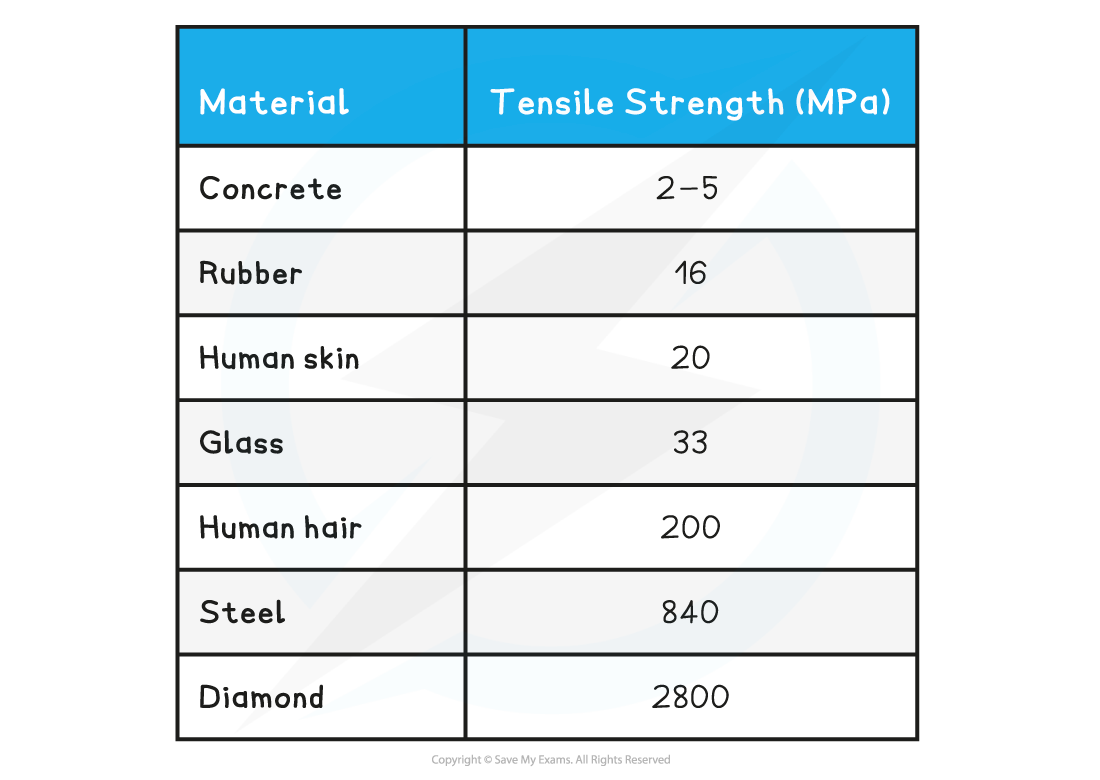Stress, Strain & Tensile Strength (OCR AS Physics): Revision Note
Exam code: H156
Stress, Strain & Tensile Strength
Opposite forces can deform an object
If the forces stretch the object, then they are tensile forces
Tensile forces lead to the two properties of materials known as tensile stress and tensile strain
Tensile Stress
Tensile stress is defined as the force exerted per unit cross-sectional area of a material

The ultimate tensile stress is the maximum force per original cross-sectional area a wire is able to support until it breaks
Stress has the units of pascals (Pa), which is the same units as pressure (also force ÷ area)
Tensile Strain
Strain is the extension per unit length
This is a deformation of a solid due to stress in the form of elongation or contraction

The strain is a dimensionless unit because it’s the ratio of lengths
Sometimes strain might be written as a percentage
For example, extending a 0.1 m wire by 0.005 m would produce a strain of (0.005 ÷ 0.1) × 100 = 5 %
Ultimate Tensile Strength
The ultimate tensile strength of a material is defined as:
The maximum amount of load or stress a material can handle until it fractures and breaks
The table lists some common materials and their tensile strength:
Tensile strength of various materials

Worked Example
A brass wire of length 4.50 m and a radius of 0.2 mm is extended to a total length of 4.53 when a tensile force of 50 N is applied. Calculate for the brass wire:
a) The tensile stress
b) The tensile strain
Answer:
Part (a)
Step 1: Write down the tensile stress equation
Tensile stress = Force ÷ Cross-sectional area
Step 2: Calculate the cross-sectional area, A of the wire
A wire has a circular cross-sectional area = πr2
Area = π × (0.2 × 10-3)2 =1.2566 × 10-7 m2
Step 3: Substitute values in the tensile stress equation
Tensile stress = 50 ÷ (1.2566 × 10-7) = 397.899 × 106 Pa = 400 MPa
Part (b)
Step 1: Write down the tensile strain equation
Tensile strain = Extension ÷ Original length
Step 2: Determine the extension
The extension is total length – the original length
Extension = 4.53 – 4.50 = 0.03 m
Step 3: Substitute values in the tensile strain equation
Tensile strain = 0.03 ÷ 4.50 = 6.7 × 10-3
Examiner Tips and Tricks
Since strain is a ratio, the extension and original length do not have to be calculated in metres. As long as they both have the same units, the strain will be correct

Unlock more, it's free!
Did this page help you?